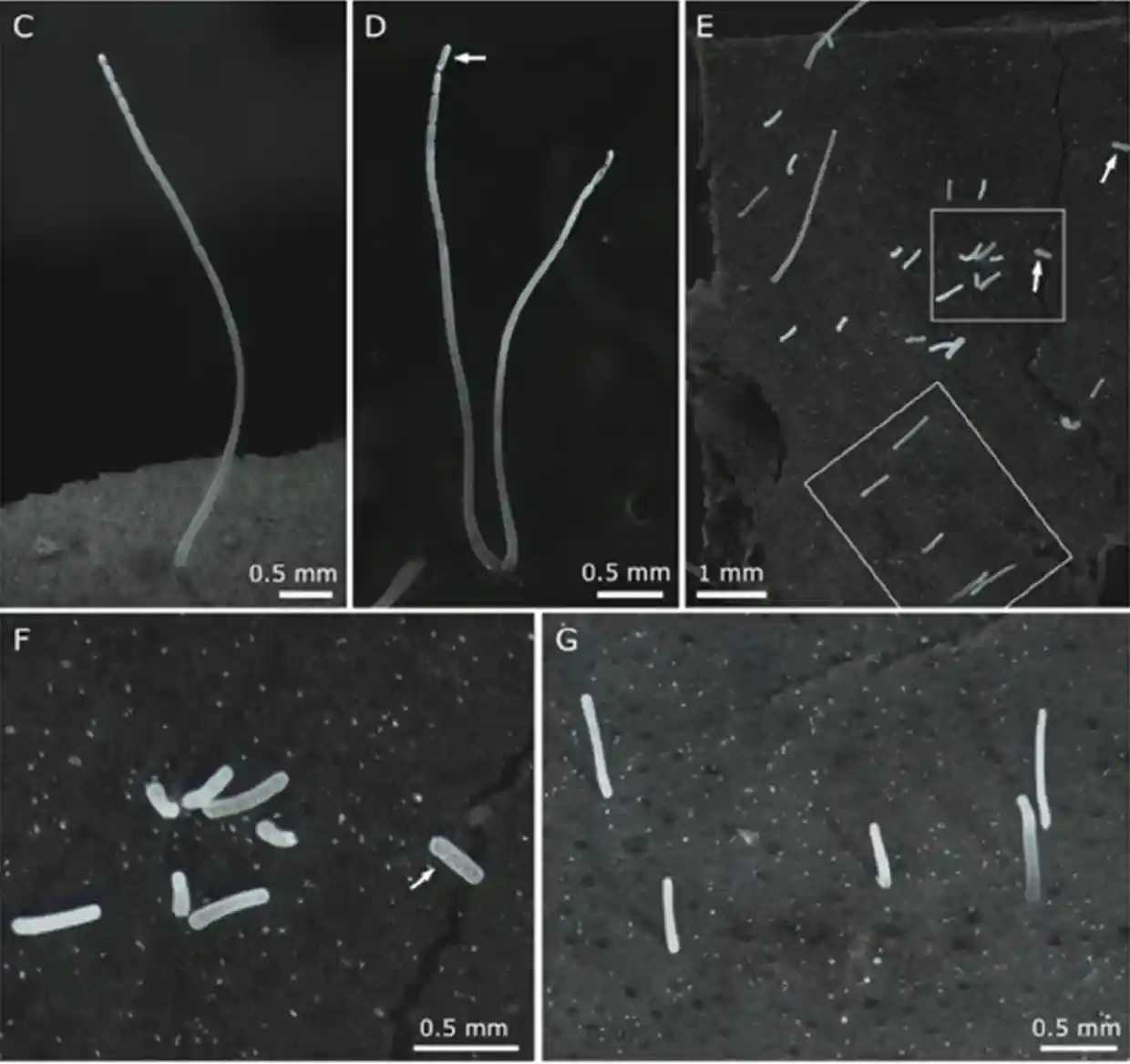
How big should a bacterium be?
Most of us know bacteria as microscopic organisms that have a simple structure. They are unicellular (that means that their entire body is made up of just one cell).
The longest known bacterium before this discovery was the Thiomargarita namibiensis, about 600-750 micrometers (.075 cms) long. That was discovered in 1999 off the coast of Namibia and has a thread-like structure.
Now, scientists have correctly identified a bacterium that is 5,000 times that size – as high as 2 cms for the longest specimen. The species has been named Thiomargarita magnifica. The new discovery was about 13 years in the making – the organism was first observed and collected in 2009 and was only announced this February.
The bacterium survives by oxidising sulphur compounds created by decomposing plant and animal remains. It just needs to attach itself to any surface to survive. It can get oxygen and CO2 from the water.
The story of the microbe
This microbe was discovered in 2009 by Prof. Olivier Gros.
He was collecting samples from Guadeloupe in the French Caribbean. He noticed some white filaments (thread like things) sticking out of leaves and decided to collect the samples.
Back at the lab, he tried to categorise the organism but was confused.
Some years later, Dr. Jean-Marie Vollard joined the lab. He also studied the organism. Then, he and the team did some genome sequencing and concluded that the organism was, indeed, a giant bacterium.
Large bacterium challenges view of bacterial cell size – YouTube
Is size the only special thing about this discovery?
In a biology textbook, most children read two key terms:
A. Prokaryotes
B. Eukaryotes
Prokaryotes are single-celled, simple living beings who do everything in a single cell. Their DNA structure floats freely within the cell.
As soon as the single cell simplicity ends, the Eukaryotes begin.
Prokaryotes and Eukaryotes have the following main differences:
A. They have a nucleus which prokaryotes do not.
B. Their DNA is in a special container – their nucleus. The prokaryotes, on the other hand, have free floating DNA material.
C. Their DNA has more strands and more genetic information.
D. Just like we have specific organs to do specific things, Eukaryotes have mitochondria for energy production, lysosomes for digestion, etc. Prokaryotes do not show these specific cell organelles.
But…
Thiomargarita magnifica is different from known prokaryotes in the following ways:
A. It is much larger.
B. It has a special space where the DNA material is stored. Tiny seed-like compartments called pepins store this DNA information.
It is not a nucleus, but the genetic material is not just floating in the cell.
C. When researchers at the Department of Energy Joint Genome Institute sequenced the DNA inside, they found the genome had 11 million bases that carried about 11,000 clearly distinguishable genes. Usually, bacterial genomes have about 4 million bases and about 3900 genes. They found that there were more than 500,000 copies of the same stretches of DNA.
D. They have a sac in the center. Scientists think that this sac is probably filled with water. The sac makes up about 73% of the volume of the bacterium. Thiomargarita namibiensis also has a sac in the center. Other bacteria do not usually have this sac.
According to Dr. Volland, the sac is an organelle and that’s “a big new step” that implies the two branches of life(prokaryotes and eukaryotes) are not as different as previously thought.
What happens next?
Well, obviously, more research needs to be done.
Scientists have not been able to create this bacteria in the lab yet. When they went back to the location to get more specimens, they could not find any. They think this could be because the bacteria is seasonal.
All images: Authors of the study
Original Study: Largest bacterium ever discovered has an unexpectedly complex cell | Science | AAAS





